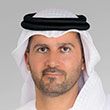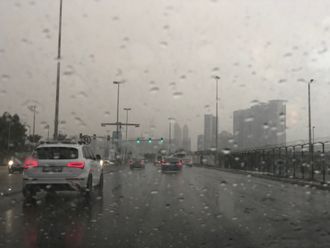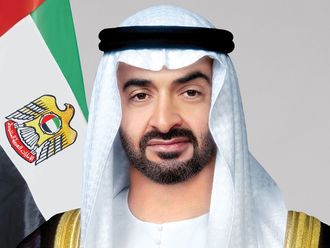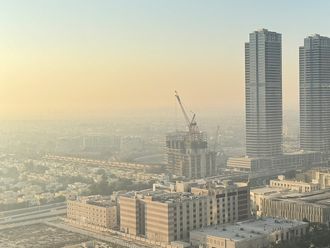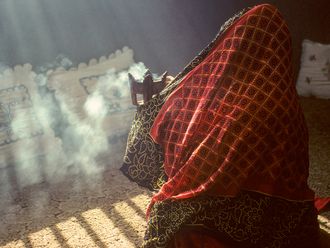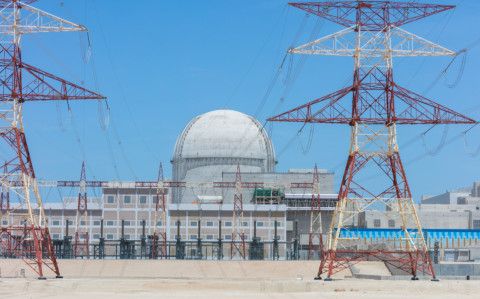
Abu Dhabi: The UAE is now the Arab World’s first country with a nuclear power plant. Its Barakah Nuclear Energy Plant began commercial operations in April 2021, marking a major milestone in the UAE’s journey to a clean energy future. Once fully operational, the plant in Abu Dhabi’s Al Dhafra region is set to supply 25 per cent of the UAE’s peak-energy needs.
The electricity that this plant will produce — amid zero carbon emissions — will be able to power more than half a million UAE households for a whole year. These 5,600 megawatts of clean electricity will thus prevent the release of 21 million tonnes of carbon emissions every year, which amounts to the carbon absorbed by 350 million trees over ten years.
The Barakah plant is owned by the Emirates Nuclear Energy Corporation (Enec) and operated by Nawah Energy Company. Its activities are overseen by the Federal Authority for Nuclear Regulation (FANR).
Till date, two of the plant’s first four units have been connected to the UAE national grid, with the second unit receiving its operating licence in March 2021 and successfully connected earlier this week. Unit 1 was connected to the grid in 2020. All of this is indeed a big deal, because an energy producing nation like the UAE, which has historically relied on carbon-producing fossil fuels for its energy needs, is setting the lead for a greener future.
Following the grid connection of Unit 2, Mohamed Al Hammadi, the Enec chief executive officer, said the plant was enabling the UAE to achieve its climate change targets through decarbonisation.
“We have reached another major milestone in the delivery of the UAE Peaceful Nuclear Energy Programme today, as part of our journey to power the UAE with clean, abundant, 24x7 electricity. The Barakah Plant supports sustainable growth and prosperity of the Nation. With the start-up of Unit 2, we are now almost halfway there to achieving our goal of supplying up to a quarter of our nation’s electricity needs and enabling sustainable growth and at the same time achieving UAE climate change targets,” Al Hammadi added.
“With the support and guidance of the leadership of the UAE, Barakah has become a case study for successful delivery of nuclear programmes, with the plant being an example for other nations that are considering the addition of nuclear energy to their energy portfolio. Seven out of ten of the world’s most sustainable nations use nuclear energy, which is not only clean, but enhances national energy security and reliability,” he added.
Here are some of the most pertinent details about this trailblazing power plant in the UAE.
About the plant
This is the first nuclear power plant in the UAE and in the Arab world as well.
Location: Al Dhafra area in Abu Dhabi, 280km away from the city centre.
Power supply: 25 per cent of the UAE’s peak-energy needs will be met with the electricity generated when the plant is fully operational.
Climate impact: 21 million tonnes of carbon emissions will be reduced annually
by the four units at the plant.
1,400 megawatts to be produced by each of the four units.
5,600 megawatts of carbon-free electricity to be supplied in total for more than 60 years.
Technology: Advanced third-generation nuclear technology (APR1400), designed by Korea Electric Power Corporation (KEPCO).
96 per cent overall construction rate. Unit 1 and 2 are complete. Unit 3 is 95 per cent complete. Unit 4 is 91 per cent complete.
FANR is responsible for regulating the design, siting, construction, operation and decommissioning.
The Emirates Nuclear Energy Corporation (Enec) was established in 2009 to construct the plant.
Nawah Energy Company is the operator and in charge of maintenance. It is an Enec subsidiary.
Abu Dhabi Transmission and Dispatch Company (Transco), a subsidiary of Abu Dhabi National Energy Company (Taqa), constructed the overhead lines to connect the Barakah Nuclear Energy Plant to the Abu Dhabi grid. This ensures that the power generated at Barakah is safe, secure and reliable.
20 per cent of the workforce at the Barakah Plant is female, one of the highest representation rates for women in the global nuclear energy industry.
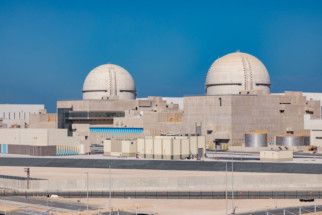
Plant operations
What is nuclear fuel made of?
Uranium is a naturally occurring, mildly radioactive element that fuels many nuclear energy plants. Uranium-235 is an isotope, or form of the element that can undergo fission — the process of splitting an atom. This makes it an ideal fuel for nuclear reactors.
How is nuclear fuel made?
Just like oil and coal, the material for nuclear fuel, called uranium ore, comes from underground. It is found in mines in nearly 20 countries around the world. After it is mined, uranium ore goes through several processes. This includes separating it from other substances, changing it into a material that is usable for nuclear fuel and manufacturing fuel pellets.
The fuel pellets are about the size and shape of a pencil eraser or an adult fingernail. They are loaded into metal tubes. These tubes, called fuel rods, are about four metres long. When bundled together, the rods create a fuel assembly.
How much fuel does a nuclear reactor use?
A nuclear reactor can use more than 200 fuel assemblies at one time, depending on the design. The APR-1400, the reactor design used at Barakah, operates using 241 fuel assemblies. Each fuel assembly weighs about 650kg.
What happens during fuel load?
Fuel load is the safety-led process that involves filling a nuclear reactor with uranium, the fuel that is used as a source of heat to generate electricity. As part of the fuel load process, Nawah’s expert operators and fuel handlers transfer 241 fuel-assemblies, one-by-one, into the reactor. With safety being the overriding priority at every stage, the carefully planned task took roughly 14 days to complete for Unit 1, with the unit containing 241 nuclear fuel assemblies. Each pellet contains enough energy to produce electricity for one Emirati household for up to four months, with zero carbon emissions.
Is fresh fuel radioactive?
New fuel assemblies have a low level of radioactivity. A person can stand next to a fuel assembly without threat to his or her health. During the process of manufacturing of fuel assemblies, workers wear special gloves to protect the tubes and components of the assembly from the oils and moisture that accumulate on a person’s skin. When they are brought to the site, fuel assemblies are transported in specially designed shipping casks. These casks are secure and robust and made primarily of stainless steel. They are designed to protect the fuel from damage during transport.
Is used nuclear fuel radioactive?
Used fuel is highly radioactive. Countries around the world have safely transported and stored used fuel for decades. Carefully designed containers are used to store and transport used fuel and prevent the release of radioactive material into the environment. The UAE is committed to ensuring the implementation of the highest international standards of quality and safety when handling used nuclear fuel to protect employees, the public and the environment. Does nuclear fuel need to be replaced?
Each fuel assembly can last up to six years in a reactor. Workers replace the fuel assemblies when they no longer produce enough heat. They replace about one-third of a reactor’s fuel every 12 to 24 months. At Barakah, refuelling will take place every 18 months, but engineers are working to improve the efficiency of the reactor and the fuel being used in order to move to a 24-month operating cycle. This will ensure the reliable delivery of continuous and clean electricity to the UAE for two years before a reactor has to be shut down to be refuelled.
What happens to nuclear fuel once it is removed from a reactor?
Once it is removed from a reactor, used nuclear fuel is stored in concrete and steel-lined pools located next to the reactor building for about five years. Cool water circulates through the pools to remove heat from the fuel until it is cool enough to move to long-term storage or to reprocess.
When the used fuel is cool, it is moved to concrete and steel containers called dry casks. These casks can be securely stored on site at a nuclear energy plant or at an interim or long-term storage facility. As part of its commitment to nonproliferation, the UAE decided to forego reprocessing from the start of the nation’s peaceful nuclear energy programme.
Reactor startup
How does a nuclear plant work?
A nuclear plant uses uranium as its fuel to generate heat. The heat makes steam, which spins a turbine connected to a generator, producing electricity.
Where does the heat come from?
Inside the nuclear fuel assemblies, there are fuel pellets made of uranium. One pellet is the size of a fingernail, but it contains the same amount of energy as one tonne of coal, or 471 litres of oil. Uranium is a special element and has an interesting property — if it absorbs a small particle called a neutron, it will split into two lighter elements, releasing a lot of heat together with more neutrons. This process is called fission. The new neutrons then hit more uranium atoms, which split, releasing more heat and neutrons and so on. This is called the chain reaction and it goes on and on by itself.
Doesn’t this process go out of control?
No, because in a nuclear plant, workers control the reaction by using special equipment that absorbs neutrons. In this way, the number of neutrons absorbed by the uranium is limited, thus limiting the amount of heat generated as well. This also means that the plant workers, known as reactor operators, can completely stop the reaction and safely shut the reactor down.
So, what is reactor startup?
Reactor startup is when the chain reaction is launched. It is the first time a neutron is sent to a uranium atom, which releases heat and more neutrons. The reaction is then allowed to continue, increasing the amount of heat inside the reactor.
Grid connection
What is grid synchronisation and connection?
Grid synchronisation or grid connection, is a historic moment for any energy plant. This marks the first time that the electricity produced at the plant is delivered to the national grid. To do this, the plant’s operators and engineers bring the electric generator to the same conditions as the electric grid, allowing the two to connect safely.
How does grid connection happen in a nuclear plant?
In a nuclear energy plant, grid connection happens in the same way as in any gas, coal or oil-fired plant. The equipment and process for grid connection are all the same. The main difference with any fossil-fuelled plant is that a nuclear plant uses uranium pellets as fuel to generate heat, which creates steam that spins a turbine, which in turn drives the electric generator to produce electricity. This process creates zero carbon dioxide emissions.
To connect a nuclear plant to the electrical grid, the reactor operators slowly increase the heat generated by the reactor to generate enough steam to begin spinning the turbine and driving the generator. Once the reactor is at about 15 per cent power, enough steam is created to have the turbine spinning at its optimal speed. This allows the electric generator to prepare to synchronise and connect to the national electricity grid.
What happens next?
Following the successful startup of the reactor and then the grid synchronisation and connection of the unit’s generator, the plant operators slowly increase reactor power and electrical output. This process is called Power Ascension Testing (PAT). Numerous tests are conducted at different power levels, ensuring that all equipment is performing safely and as designed. This process takes several months to complete, until the unit reaches 100 per cent reactor power. Unit 1 has already completed PAT, while Unit 2 has now begun the PAT process.
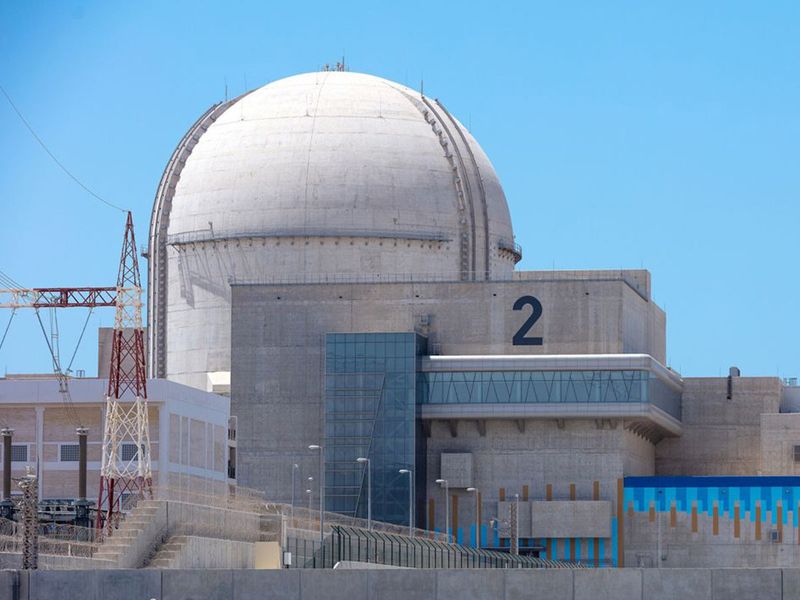
Safety
Enec has answered some common questions about nuclear safety.
Are nuclear energy plants safe?
Yes. The performance records of approximately 450 nuclear energy facilities operating in more than 30 countries have demonstrated that nuclear energy is safe.
The World Association of Nuclear Operators tracks data about plant performance, including safety system performance, fuel reliability and industrial accident rates. The performance data consistently show positive results.
In the UAE, the FANR plays an essential and entirely independent role in ensuring that the Barakah plant is safe, secure and reliable through a robust regulation and oversight.
The Barakah plant follows international best practices and uses a defence-in-depth safety approach. This includes:
- Multiple physical barriers that protect against accidental radiation release.
- Multiple layers of redundant and diverse plant safety systems that ensure that the reactor operates normally and shuts down automatically if necessary.
- The emergency response plan, which is regulated, tested and exercised with FANR and has been reviewed by the International Atomic Energy Agency (IAEA). The IAEA is the global body that facilitates cooperation in the field of nuclear energy.
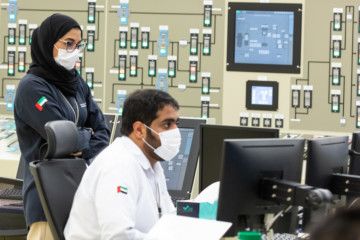
Does the UAE have any plans to enrich uranium for its own fuel?
No. It is enshrined in the UAE Nuclear Law that the UAE will not enrich uranium and this is reinforced in the UAE policy on peaceful use of nuclear energy. Following a comprehensive procurement process, Enec entered into contracts with six suppliers to provide material and services, including uranium enrichment. KEPCO Nuclear Fuels (KNF) in South Korea fabricates the fuel assemblies that are then shipped to the UAE, following all regulations and international best practices.
Will the UAE reprocess used nuclear fuel?
No. In addition to forgoing domestic enrichment, another part of the UAE’s commitment to nonproliferation is to forgo the reprocessing of nuclear fuel.
The UAE is a signatory of all relevant international agreements and treaties for nonproliferation and is a member of the relevant organisations and regimes. The UAE also signed a 123 Agreement with the United States of America, which incorporates nonproliferation commitments.
What will the UAE do with the fuel once it is removed from a reactor?
The Federal Government of the UAE is developing its long-term storage policy for used fuel, but Enec must ensure the safe disposal of solid radioactive waste in accordance with the laws of the UAE and the legislation of the FANR and the IAEA.
The UAE is a signatory of the IAEA Convention on the Safety of Spent Fuel Management and on the Safety of Radioactive Waste Management, and submits a regular report to the organisation to describe its efforts on the steps taken to fulfil its obligations as a Contracting Party to the Convention.
The UAE is well ahead in developing its plans, with storage needs not required for at least two decades, as the Barakah plant can safely store waste for the first 20 years of operations.

What is the risk of an accident like TMI, Chernobyl, Fukushima happening at Barakah?
The Barakah plant has implemented lessons learnt from Three Mile Island and Chernobyl. Post-Fukushima, the APR1400 design used at Barakah underwent a significant review using the European Stress Test method. This method determined that the plant design was already fairly robust against Fukushima-type events. To ensure this, FANR integrated the lessons learned from Fukushima into the requirements for the construction of the Barakah plant and reported on their implementation to the IAEA in 2017.
Enec still implemented 18 design enhancements to provide further capability to protect the health and safety of the public and prevent release of radioactive material into the environment. These modifications would allow plant operators additional methods to further mitigate a number of scenarios, including earthquakes, tsunamis, fires, station blackouts and severe accidents. For example, the plant has a number of back-up power options in the event of a power failure at the site. One of these back-up power supplies is the AAC diesel generator. In the original design, the AAC could run for up to eight hours before needing more fuel. With the revised design, the fuel will last up to 24 hours.
Meanwhile, FANR has now conducted more than 335 inspections since the start of Barakah’s development. This is in addition to more than 42 missions and assessments by the IAEA and World Association of Nuclear Operators (WANO), an international group of nuclear power plant operators dedicated to nuclear safety.


